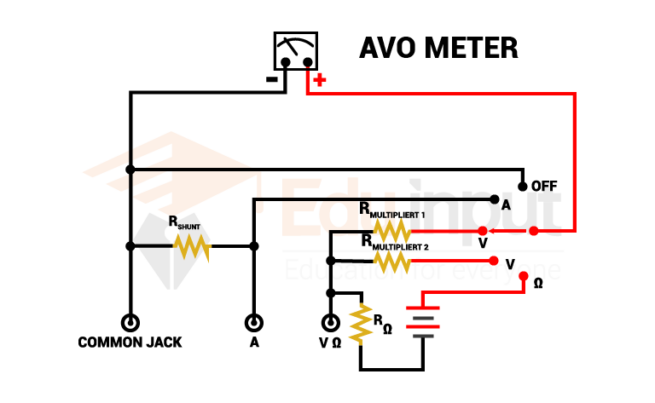Electromagnetic Induction-Definition, Types, And Application
Electromagnetic induction is a phenomenon in which an electric current produces a magnetic field around it. In reality, this is the same as saying that a changing electric current induces a changing magnetic flux.
What is electromagnetic induction?
The term electromagnetic induction is used for the phenomenon in which the electrical current through the conductor (magnetic flux) causes the generation of the magnetic field around the conductor.
Electromagnetism is concerned with creating a magnetic field when an electric current pass through a conductor while electromagnetic induction refers to the induction of current when a conductor passes through a magnetic field.
The current and emf are induced in a conductor while moving through a magnetic field.

The emf induced by the motion of a conductor across a magnetic field is known as motional emf.
The average emf induced in a conductor of N loop is equal to the negative of the rate at which the magnetic flux through the coil is changing with time.

This is known as faraday’s law. The direction of emf is determined by Lenz’s law. This law state that the direction of the induced current is always to oppose the change which causes the current.
Electromagnetic induction is one of the most important concepts of physics and it is used in many of our daily life activities. It is also known as electromagnetic induction, electromagnetic force, electromagnetic field, and electromagnetic induction force.
The electromagnetic induction depends upon the type of material that is being inducted.
• Induction is a concept that describes the induction of a magnetic field. It occurs when a changing electric current produces a changing magnetic flux. The changing magnetic flux induces the currents within the conductor.
• Induction is a concept that describes the induced magnetic field. It occurs when a changing electric current generates a changing magnetic field.
• Induction is the flow of electric charges from the charged objects.
Electromagnetic induction is one of the most important concepts of physics.
Types of Electromagnetic induction
There are two types of electromagnetic induction
Self-induction is the phenomenon n which a changing current in a coil induced an emf in itself. The phenomenon in which a changing current in a coil induces an emf in another coil is called mutual induction.
Electromagnetic induction application
Electromagnetic induction is the main factor behind a number of technological advancements. For example, electromagnetic induction is the reason behind the creation of electrical motors, transformers, AC generators, DC generators, and induction motors.
Another example is induction heating, which is the process of transferring heat to a body by inducing a current to pass through the body.
How do electromagnetic inductions work?
The explanation of this concept is not very difficult. As you know that the source of the magnetic field is the moving electrons, and the direction of the flow of the electron is perpendicular to the direction of the magnetic field.
In the presence of a changing electric current, the electrons of the conductor move and create the changing magnetic field. This is how the phenomenon works and you can also use the above-mentioned examples in your daily life.
What is Electric induction?
There are three different kinds of electric induction.
• The first one is direct electric induction.
This kind of induction occurs in the presence of a changing current.
• The second one is alternating electric induction.
This type of induction occurs in the presence of a changing current.
• The third one is electromagnetic induction.
The concept of electromagnetic induction is used in this kind of induction.
An induction cooker uses a type of induction heating for cooking. A coil of copper wire is placed underneath the cooking pot. An oscillating current is applied to this coil, which produces an oscillating magnetic field. This magnetic field creates heat in two different ways. It induces a current in an electrically conductive pot, which produces joule heat. It also creates magnetic hysteresis loss in the ferromagnetic pot. The former effect dominates hysteresis losses and typically accounts for less than ten percent of the total heat generated.







Leave a Reply